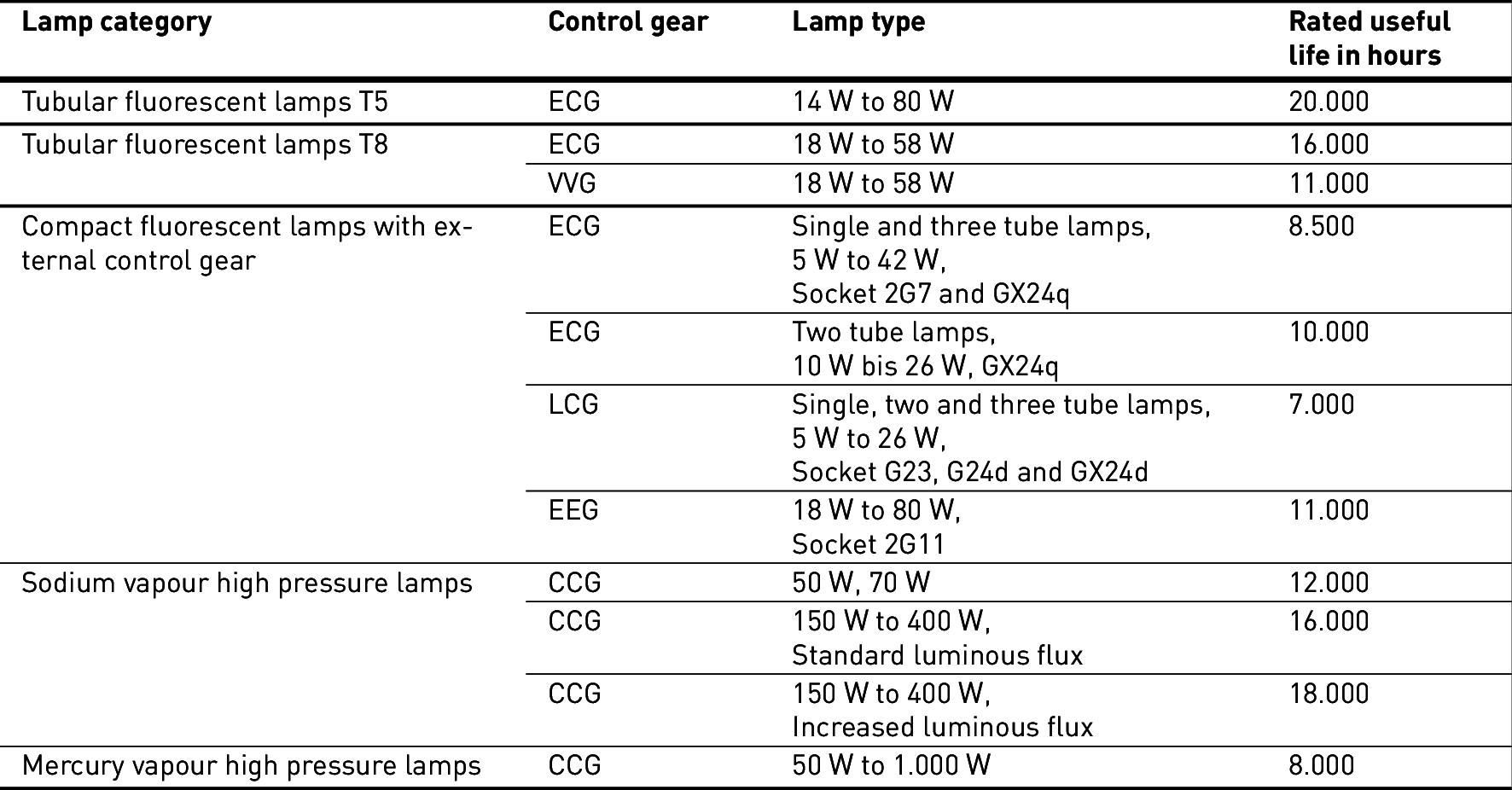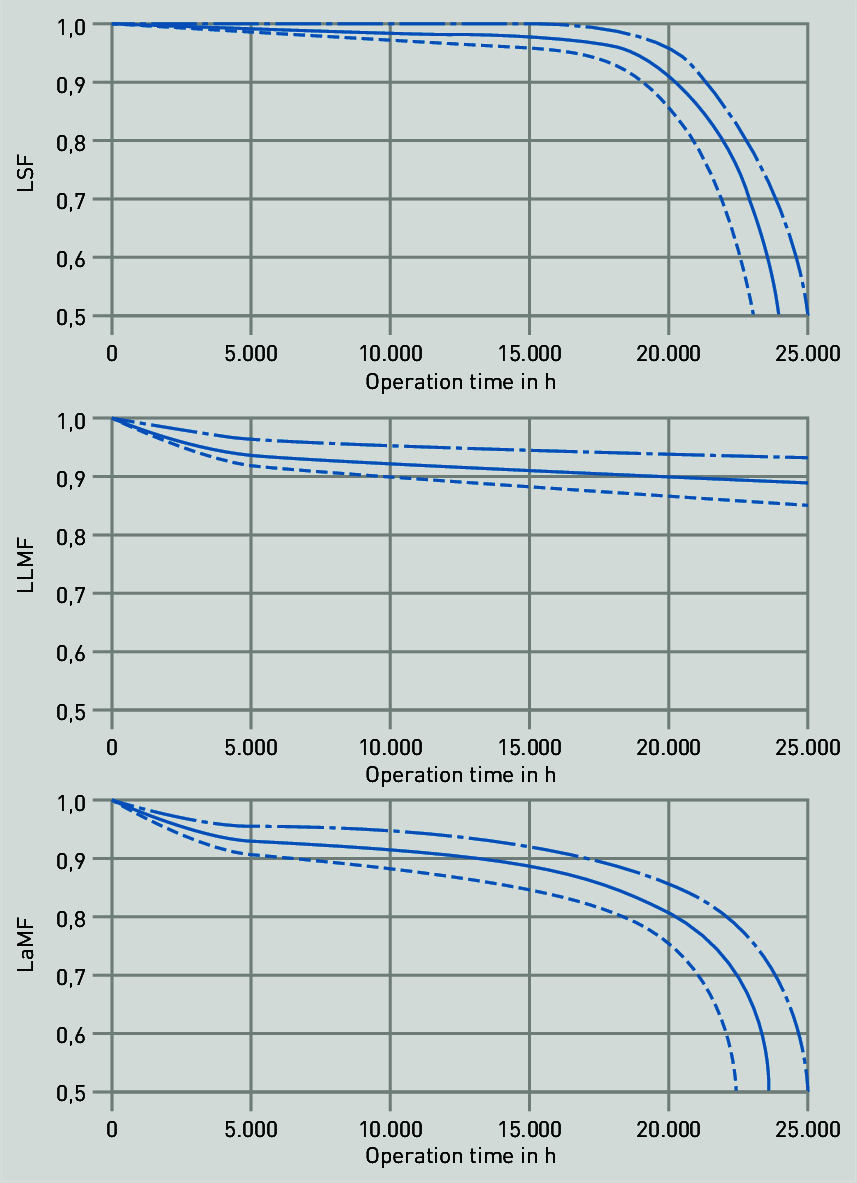The service life of lamps depends on several factors.
Lamp service life
With incandescent lamps, e.g. for residential areas, specifying the statistic average service life is sufficient. It is 1,000 hours for incandescent lamps and 2,000 to 4,000 hours for halogen lamps. After this time, only 50% of lamps are still (statistically) functional. This service life is also called average service life.
The same service life definition used for incandescent lamps is applied to compact fluorescent lamps with integrated (mostly electronic) control gear units which mainly serve as replacements for incandescent lamps.

Table 3.171: Benchmarks for the useful life of some lamp types
Useful life (also referred to as economic service life) is specified for fluorescent lamps and compact fluorescent lamps with external control gear units as well as for high-pressure lamps and low-pressure sodium lamps. Useful life is the length of time it takes for system luminous flux (the product of the remaining functional portion of lamps and the remaining luminous flux after luminous flux drop) to reach 70% or 80% of the initial value (see benchmarks in table 9.5). The useful life of fluorescent lamps is based on a switching cycle of 3 hours (165 minutes ON and 15 minutes OFF). For high-pressure lamps, the switching cycle is defined as 12 hours (11 hours ON and 1 hour OFF).
Another distinct characteristic is nominal service life. This is the time period with a switching frequency of 12 hours (11 hours ON, 1 hour OFF) after which 10% of lamps failed (abbreviation: 12B10). Benchmarks for this are also specified in table.
Figure shows the fundamental progress of operability A (amount lamps which are still functional) and lamp luminous flux B dependent on operating duration. The product of both parameters is system luminous flux. Chapter “Lamp maintenance factor” contains realistic diagrams for tubular fluorescent lamps and compact fluorescent lamps.
For fluorescent lamps, economic service life (useful life) relates to 80% of system luminous flux (see also chapter “Lamp maintenance factor”).
Useful life depends on a series of influencing factors, e.g. switching frequencies, lamp wattage, types of fluorescent substance and eventually product batch. Consequently, providing exact information on service life can be challenging. However, exact information about service life is not always necessary from a practical point of view since relamping usually does not occur at the end of the useful life but at a time determined for business reasons. Relamping occurs e.g. due to new illuminance measurements, in-company cost analysis for maintenance procedures and e.g. also depends on access to the lighting installation.
These and other criteria are used in many cases to make a decision for group or individual lamp replacement.
With tri-phosphor fluorescent lamps connected to magnetic control gear units, a useful life (average service life) of 10,000 hours (13,000 hours) can be reached under rated conditions, and up to 18,000 hours (20,000 hours) with hot-start ECGs. These values apply to rated conditions and a decrease of system luminous flux to 80% of the initial value. Derating and overloading can cause service life reductions.

Table 3.172: Benchmarks for the nominal useful life of some lamp types

Figure 3.257: Economic service life of fluorescent lamps